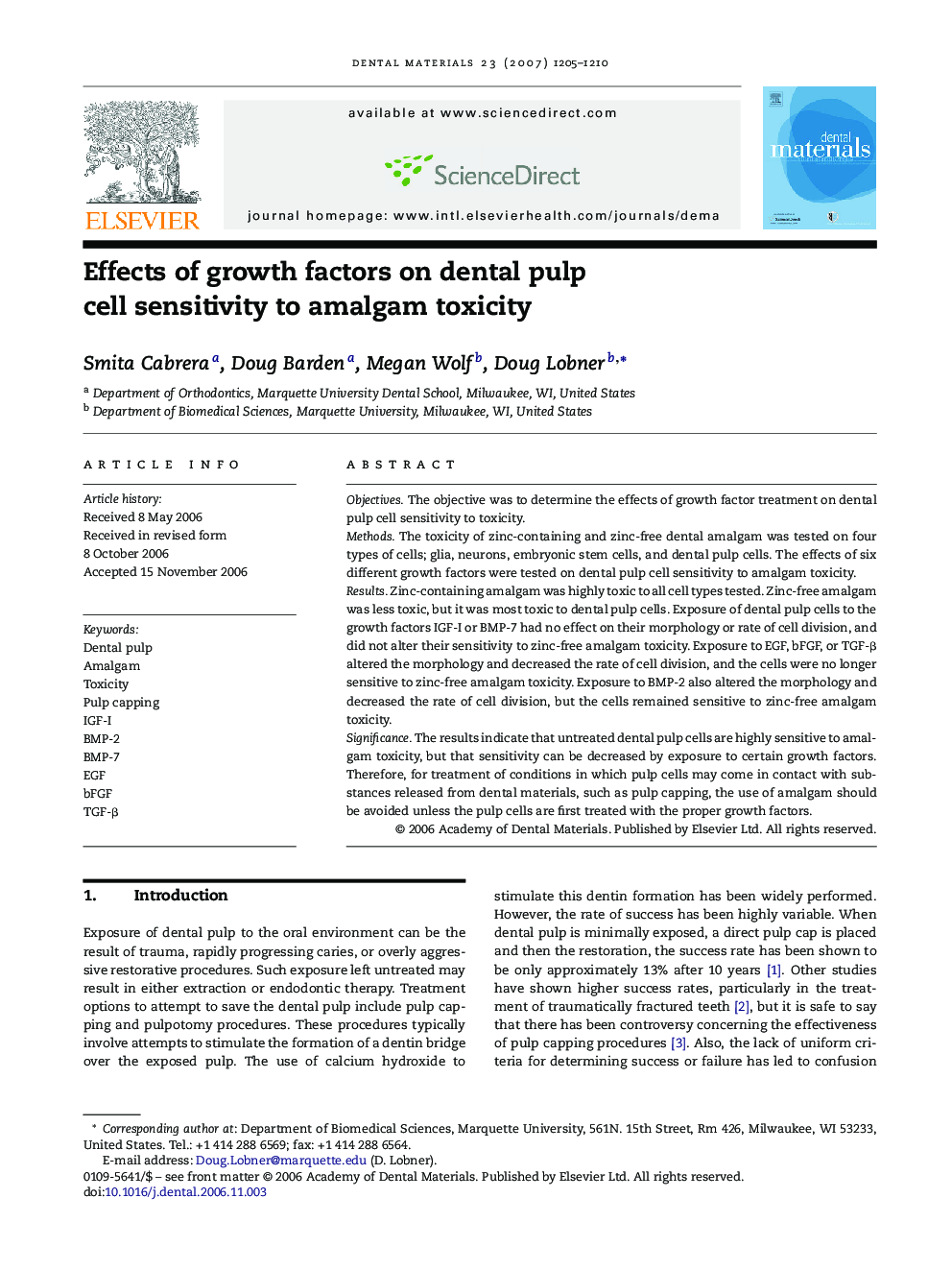| Article ID | Journal | Published Year | Pages | File Type |
|---|---|---|---|---|
| 1423286 | Dental Materials | 2007 | 6 Pages |
ObjectivesThe objective was to determine the effects of growth factor treatment on dental pulp cell sensitivity to toxicity.MethodsThe toxicity of zinc-containing and zinc-free dental amalgam was tested on four types of cells; glia, neurons, embryonic stem cells, and dental pulp cells. The effects of six different growth factors were tested on dental pulp cell sensitivity to amalgam toxicity.ResultsZinc-containing amalgam was highly toxic to all cell types tested. Zinc-free amalgam was less toxic, but it was most toxic to dental pulp cells. Exposure of dental pulp cells to the growth factors IGF-I or BMP-7 had no effect on their morphology or rate of cell division, and did not alter their sensitivity to zinc-free amalgam toxicity. Exposure to EGF, bFGF, or TGF-β altered the morphology and decreased the rate of cell division, and the cells were no longer sensitive to zinc-free amalgam toxicity. Exposure to BMP-2 also altered the morphology and decreased the rate of cell division, but the cells remained sensitive to zinc-free amalgam toxicity.SignificanceThe results indicate that untreated dental pulp cells are highly sensitive to amalgam toxicity, but that sensitivity can be decreased by exposure to certain growth factors. Therefore, for treatment of conditions in which pulp cells may come in contact with substances released from dental materials, such as pulp capping, the use of amalgam should be avoided unless the pulp cells are first treated with the proper growth factors.
